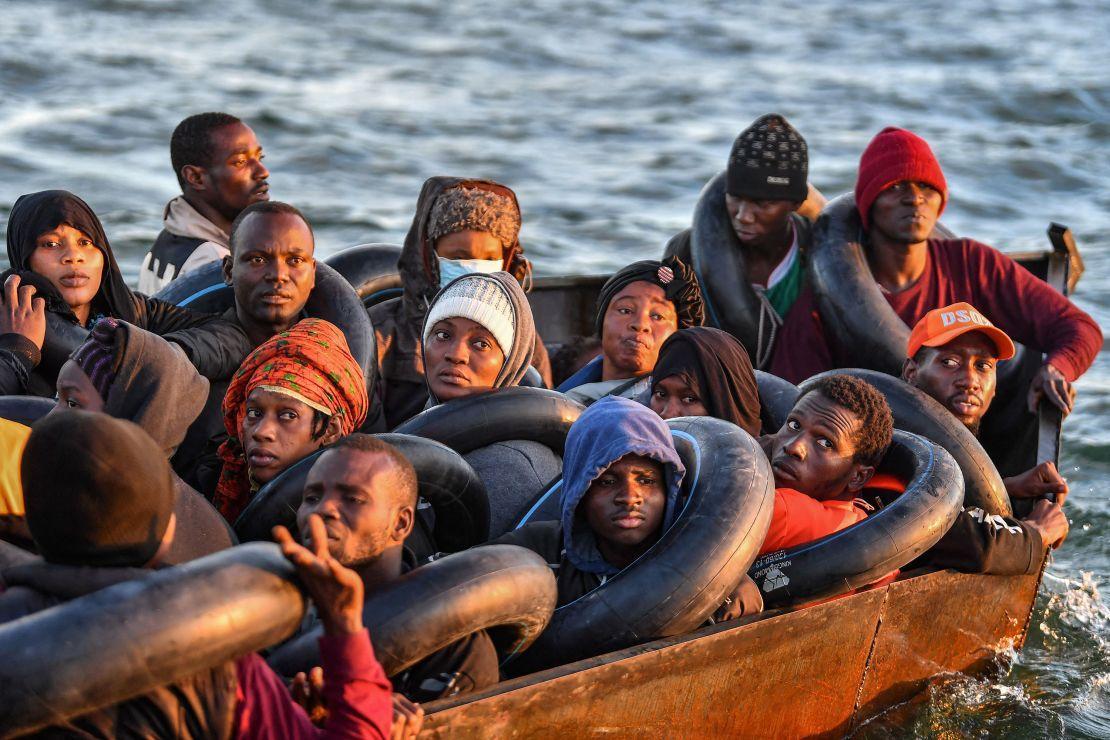Africa-Press – Ghana. The Donald Trump administration issued an executive order in June 2025 banning nationals from 12 countries from travelling to the United States. It also imposed entry restrictions on nationals from seven others.
About half of the countries affected by these measures are in Africa. This raises concerns about the future of African migration to the US.
The restrictions are among several new threats and opportunities that affect the dynamics of African migration.
I am a social demographer and in a recent study my co-author and I identified trends that will shape the future of African migration flows and are different from migration patterns of the past. There are at least five emerging trends:
Migration between African countries is not following colonial labour migration patterns.
Africans are migrating to new destinations (for example in South America and Asia).
There’s more diversity in the types of African migrants, based on who they are, why they are migrating and how they are doing it.
There is significant migration to Africa from non-African countries (like China).
Institutions (such as municipal and traditional authorities) have an expanding role in migration.
I argue that these trends are likely to be accelerated by changes in Africa’s demography. For example, the continent is expected to have the world’s largest population of youth by 2050.
The tendency to migrate is typically concentrated in younger age groups. So Africa’s large youth population is likely to shape the course of future international migration flows more than migrant populations elsewhere.
Shaping the trends
One factor shaping the trends is the expansion of efforts to regulate African international migration. Trump’s executive order is only one example of these strategies.
Many western countries have developed new policies that directly or indirectly restrict the opportunities available for migration from Africa.
For example, there is Canada’s Strong Borders Act, tabled as a bill in June 2025. There are fears it will restrict refugee protections and cause refugee applicants in Canada without legal status to live in hiding. These consequences could negatively affect the resettlement of African refugees in the country.
As part of the tighter controls, countries in the west are restricting Africans’ access to visas. Africans applying for visas to travel to Europe experience disproportionately high rates of visa rejections.
Such restrictions are not accounted for in major theories of migration, most of which focus on the influence of economic, social and political factors. It’s possible that these restrictions by themselves will negatively affect overall African migration flows.
The second driver of trends in African migration is the changing patterns within the continent.
The number of Africans migrating to other African countries has always been higher than the number migrating to the west. In the past, these intra-continental migrations revolved around the movement of labour migrants to facilitate the colonial extraction of resources in countries such as Côte d’Ivoire and South Africa.
In recent years, however, the dynamics of these movements have been changing. For example, the fastest growing destinations for Africans on the continent are now in Central Africa. The United Nations’ estimates of international migrants living in African countries indicates that between 1990 and 2020, the number of migrants increased from 2,740 to 230,618 in Equatorial Guinea; from 33,517 to 656,434 in Angola; and from 74,342 to 547,494 in Chad.
Other new destinations are also emerging on the continent. According to the International Organisation for Migration, these include Egypt, Morocco, Burkina Faso and Ethiopia.
These changes suggest that factors like better economic opportunities and the search for safe havens from conflict are causing many Africans to migrate to destinations that are different from those that were most attractive to African migrants during the colonial period.
A third important driver of trends has been a change in the global destinations to which Africans now migrate. As opportunities for migration to the west decline, African migrants are increasingly exploring opportunities for migration to Asia, South America and Australia.
Africans have been arriving in Asian countries such as China and Japan in significant numbers over the past three decades to study or pursue business opportunities.
For example, it’s estimated there are now around 500,000 Africans living in China.
Many are entrepreneurs in business hubs such as Guangzhou. But they also include Africans who have settled in large numbers in places such as Hong Kong, Shanghai and Beijing.
The African-born populations living in Australia, Israel, Japan and Russia are also increasing. For example, although there were very few African immigrants in Japan before 1980, by 2015 there were about 12,000.
African migrants are also increasingly travelling to Central and South American countries, either as transit destinations in their efforts to migrate to the US or as countries of permanent settlement.
Migrants from Africa are also increasingly willing to take risks while migrating to high-income countries. This has resulted in the loss of thousands of lives among migrants attempting to travel to Europe by crossing the Saharan desert and the Mediterranean Sea.
There is no doubt that policy restrictions that affect African migration to western countries will have many negative consequences. However, migration flows always adapt to support the welfare of communities around the world.
theconversation
For More News And Analysis About Ghana Follow Africa-Press







